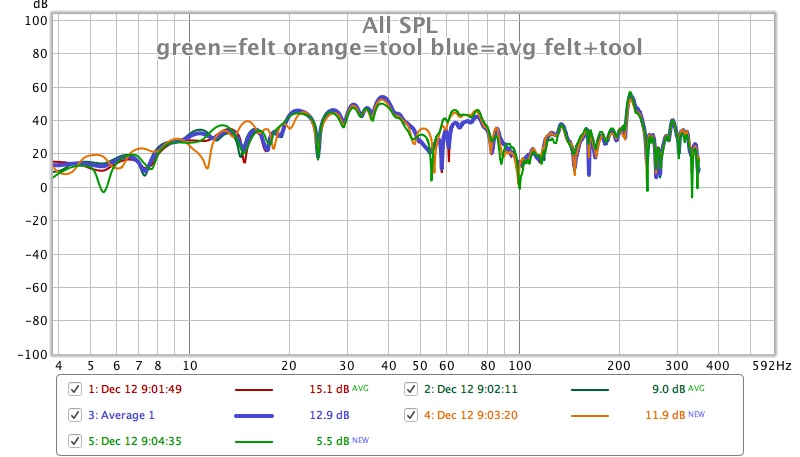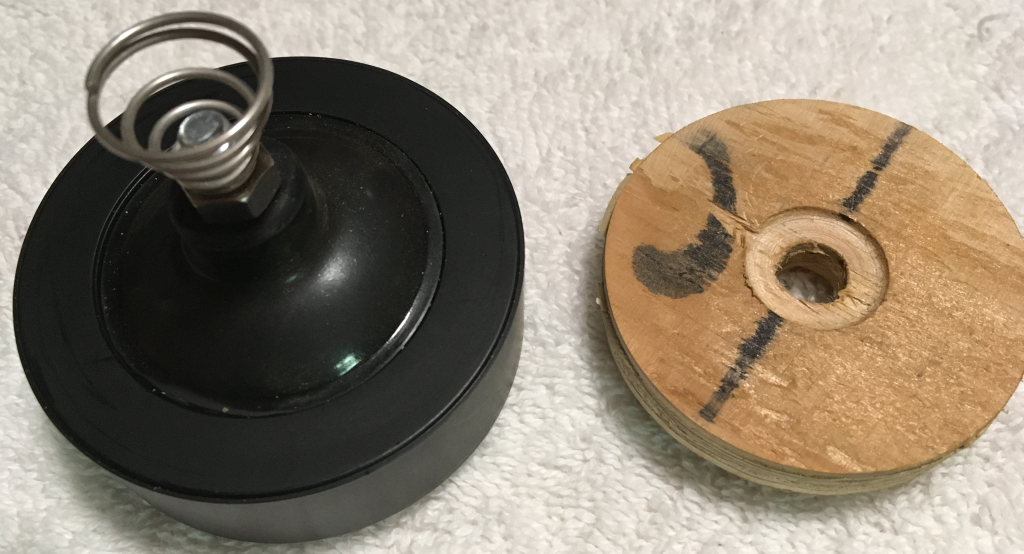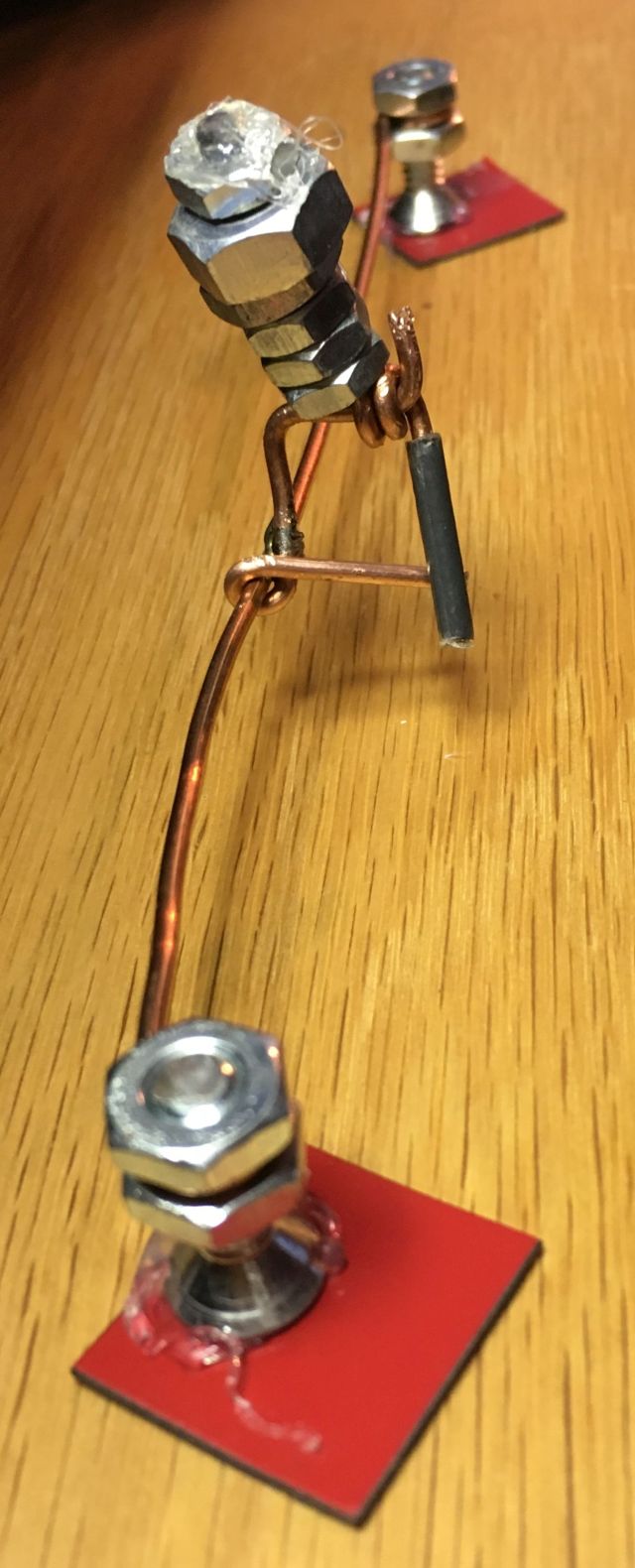AT-LP140XP microphonics, mats, covers, springs, lift, resprung, sprungboard(stylus cantilever) VTAother considerationsnonslip matSeemingly, primary motivations for felt mats are reduced cost and facilitating DJ pitch bending and slip cueing.Instead, my platter mat wish list includes:
While I eventually intend to measure frequency response sweeps from test records with different mats,
In this case, the turntable stand is 20mm MDF on engineered flooring over concrete slab, so minimal "trampoline effects".
As an expedient spacer for provided 1.5mm felt, a 295mm diameter mat was cut from tool box liner:
microphonicsUsing REW (Room EQ Wizard), felt pad cartridge signal measurements of loudspeaker sweeps indicate thatmicrophonics are generally comparable with cover down or removed, with most differences below 350Hz: 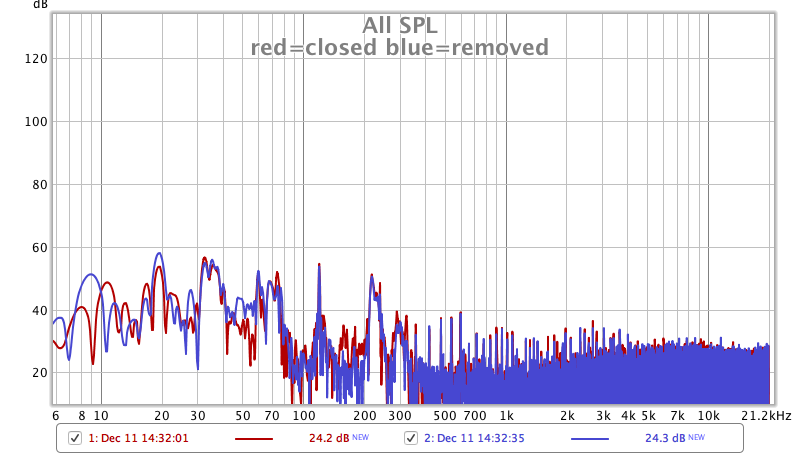 Sharp nulls suggest mechanically conducted vibration into platter from base cancelling airborne energy into LP.
The extent to which acoustic energy travels up from stand through feet and chassis vs cover effectiveness,
Similarly, benefits of mat isolating LPs from energy conducted into platter
Here is more evidence: Aftermarket cover?For clarity and before evaluating traditional mat alternatives,measurements are wanted with better isolation, perhaps including a cover that surrounds the turntable, not resting on the deck rather than the included cover that couples to the plinth. That sort of cover is seemingly wanted for most turntables lacking decoupling between platter and plinth... These direct-drive "DJ" turntables are about 450x350mm, while e.g. Thorens TD 160 plinth are about 480x390mm; if covers of about TD 160 size were available at reasonable cost, then one could construct an open-top box about 100mm high in which to set a sprung turntable and e.g. attach Thorens cover hinges to that box. Spring SuspensionI would prefer a semi-automatic direct drive with spring suspension,but that wants getting lucky e.g. finding a Technics SL-1700MK2. Instead, this Audio Technica has M6x2.0 threaded feet, so inserted springs between them and its plinth. Installing nuts threaded down to expose about 1/4 inch locates small ends of $8 conical springs from Amazon: Taller and softer springs would be better... A hole saw cut four 2.25 inch diameter pucks from 3/8" plywood that fit plinth feet pockets, with 1/8" deep spring pockets made by a 3/4" spade bit and a 3/8" center bore to clear threaded feet ends. Tonearm LiftIf not semi-automatic, then at least tonearm lift at runout is wanted.The Q UP lift on my Thorens was much less expensive back in the day, and no commercially available lift fits an AT-LP140XP or other DJ style turntables. The AT-LP140XP has a steel deck, so a lift can be located by magnetic squares. Flat head screws are hot-glued to a pair of those squares, Another 2 inches of wire are wrapped and soldered at right angle about 2.25 inches from one end.
The other cross piece arm is bent to hold the pendulum's weighted end just over center, Spring Suspension MKIISprings from McMaster-Carr: Their spring rate is spec'd at less than half that of relatively tiny springs from Amazon, which were probably overrated. Upper spring seats are old Pioneer PL-950 feet. Increased spring travel has no benefit in this application, but the LP140XP is now much less affected by side impacts to its stand. Springs could be still softer e.g. 5 instead of 6.5 lb/in: https://www.mcmaster.com/1692k4 Those would re-enable height adjustment by turning nuts on threaded feet and further reduce plinth resonant frequency: REW microphonics measurements involving these larger springs had two unexpected results:
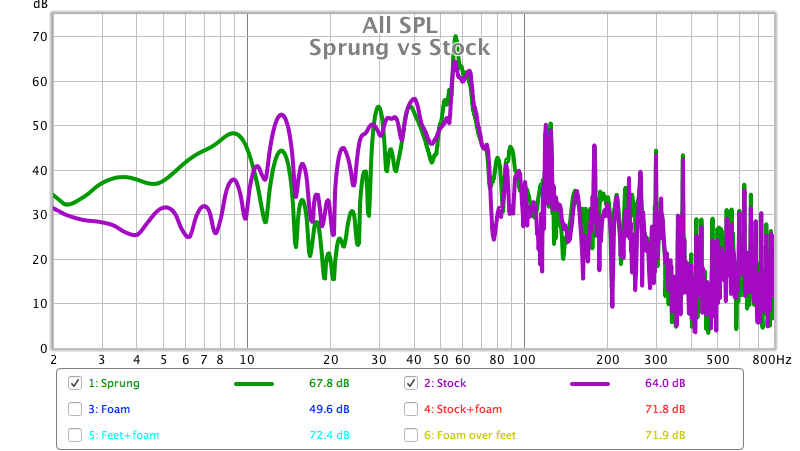 Increased microphonic sensitivity below 10Hz would be inaudible, but impacts record tracking Some measurements include open cell foam cut from packing material: 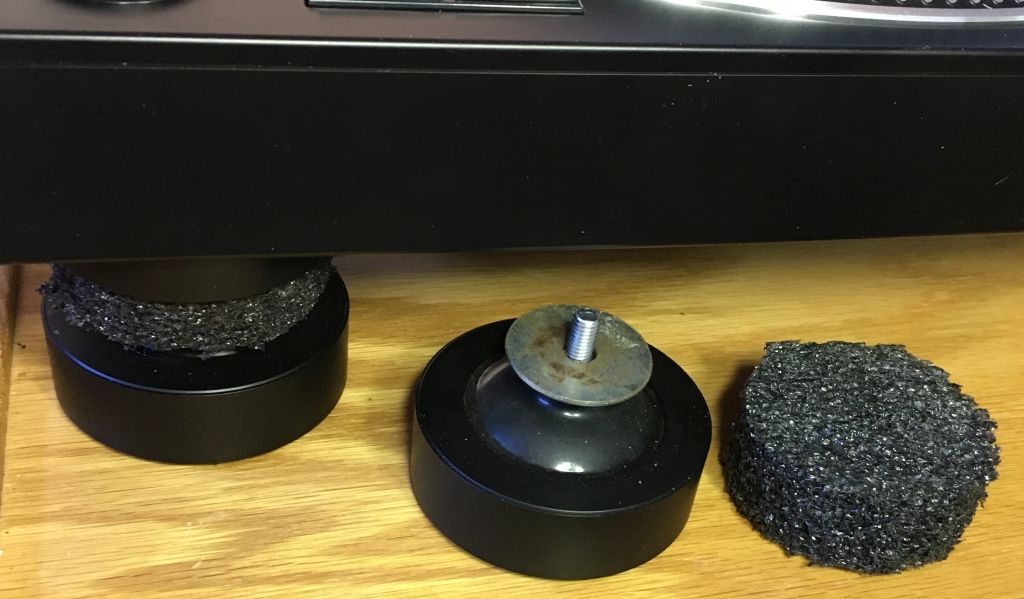 .. e.g.: 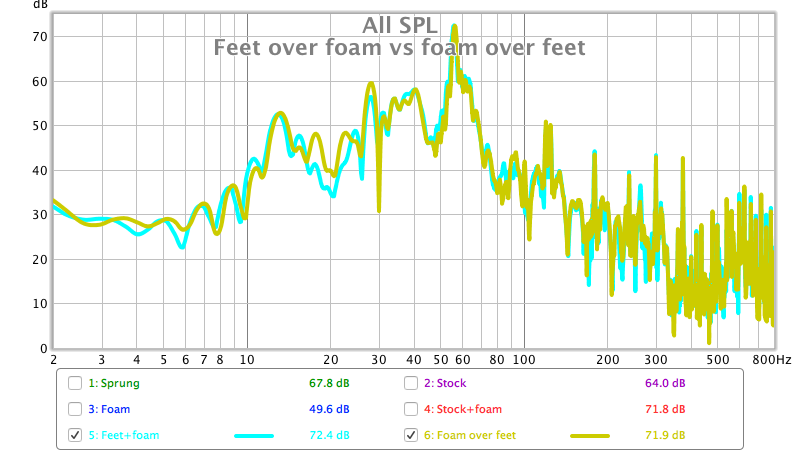 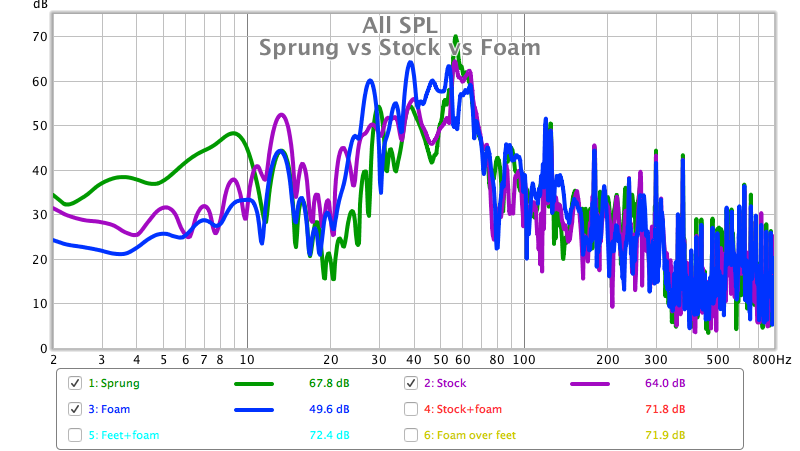 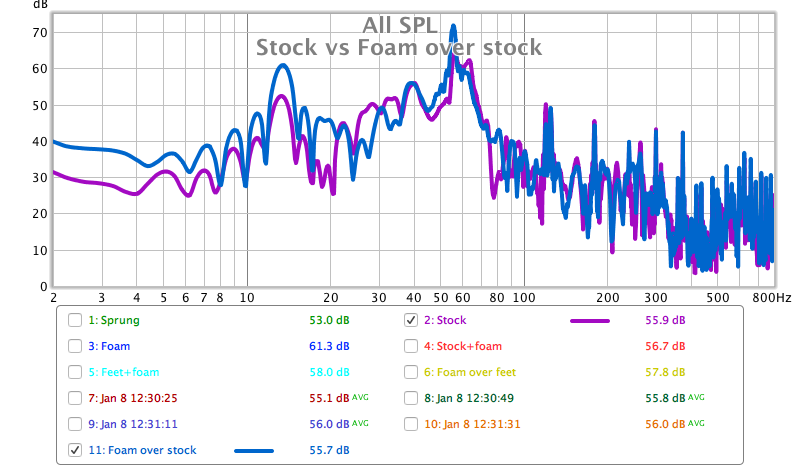 With stock feet, removing the cover generally measures worse; those feet seemingly cancel 59Hz cover resonance: 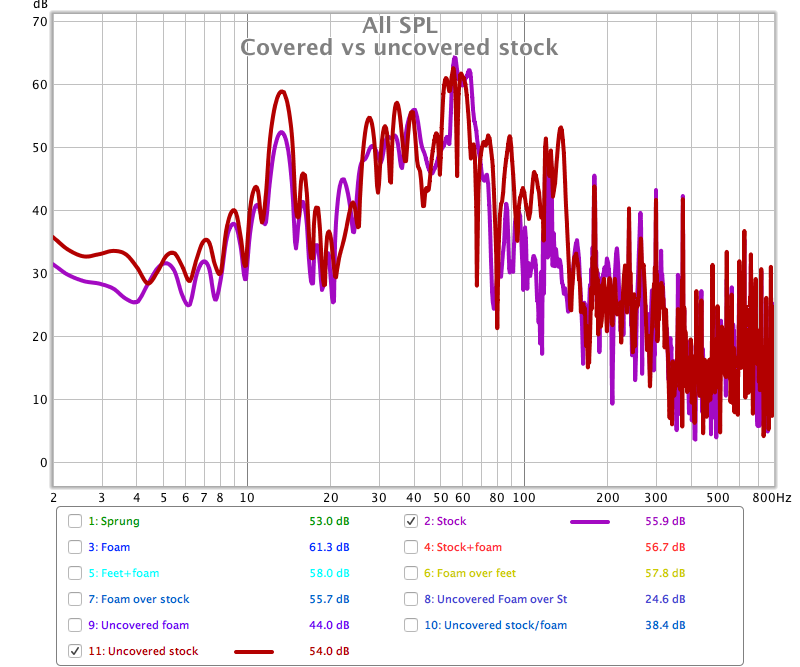 As note during earlier measurements, dust cover up is worse than either down or removed. With the dust cover removed, foam alone is worse than stock feet nearly everywhere. 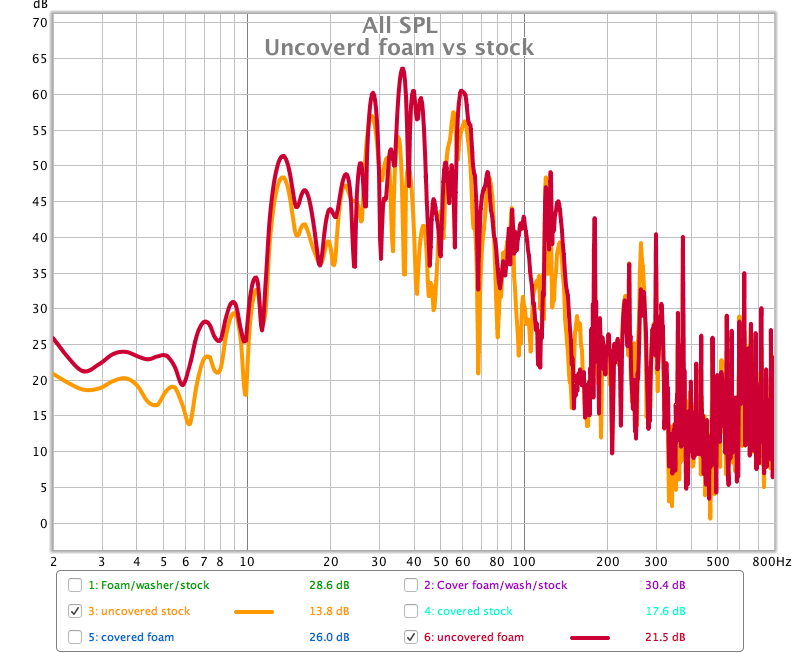 The foam over washer over stock feet sandwich works less well but shows dust cover resonance impact more clearly: 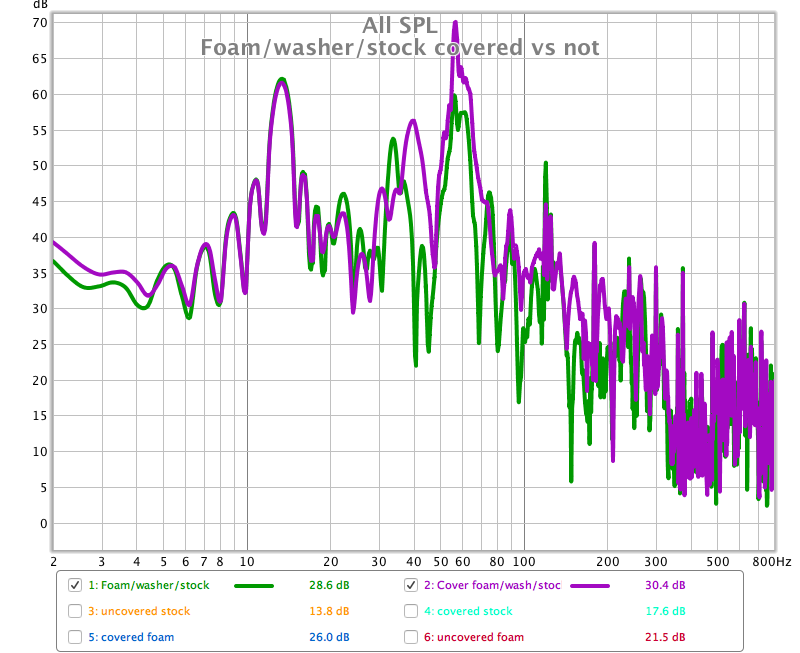 Spring BoardIncreasing mass also reduces suspended plinth resonant frequency. Inserting a 3/4 inch maple sprung shelf with a pair of foot square ceramic tile, interleaved with expanded polymer sheets to avoid rattles, should improve isolation. McMaster-Carr 1692k42 springs still have a half inch of travel. |
|
maintained by blekenbleu |

